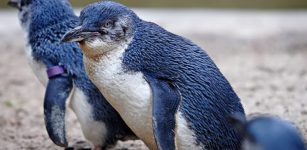Clown Anemonefish May Master Simple Math And Count Stripes On Other Fish
Eddie Gonzales Jr. – MessageToEagle.com – It appears that certain fish species may possess a higher level of awareness and intelligence than we previously attributed to them. The beautiful clown anemonefish (Amphiprion ocellaris), renowned for its vibrant orange and white hues, is the subject of a recent study. Scientists suggest this intriguing marine creature has abilities that have been overlooked until now.
The clownfish may be more intelligent than previously thought. Credit: Adobe Stock – Pro Hi-Res
A research team from the Okinawa Institute of Science and Technology (OIST) Graduate University discovered that clownfish might be capable of basic counting skills to identify fellow aquatic creatures and chase away trespassers.
There exist 28 distinct species of clownfish. The intriguing question then arises: how do these highly territorial creatures differentiate between friend and foe?
By observing a colony of clown anemonefish (Amphiprion ocellaris), the species that inspired the main character in the film ‘Finding Nemo,’ researchers at OIST found that the clownfish can distinguish between different species of fish based on the number of white bars present on their bodies, indicating a sophisticated level of recognition when encountering intruders in their sea habitat.
The Clownfish Can Count Up To Three Stripes
According to the study published in the Journal of Experimental Biology, the clownfish can count up to three stripes on other fish.
“The frequency and duration of aggressive behaviors in clown anemonefish was highest toward fish with three bars like themselves, while they were lower with fish with one or two bars, and lowest toward those without vertical bars, which suggests that they are able to count the number of bars in order to recognize the species of the intruder,” explains Dr. Kina Hayashi from the Marine Eco-Evo-Devo Unit at OIST, first author on the paper.
Social Ranking In The Clownfish Colony
The clown anemonefish is typically a welcoming host, permitting various species to visit their sea anemone. However, when a foreign member of its own species, not belonging to the colony, intrudes into their territory, the largest fish of the colony – known as the alpha fish – will aggressively bite and expel the intruder.
While observing the clownfish behavior, the scientists noticed that the clown anemonefish exhibited the highest level of aggression towards intruders that bore three stripes similar to their own. Intruders with two stripes were subjected to a moderately lower frequency of attacks, whereas those with one or no stripe encountered the least amount of aggression.
Prior research indicates that clownfish react more strongly to vertical bars than horizontal ones. This suggests that the extent of white coloration or the mere presence of white bars does not serve as the determining factor.
The researchers have identified a strict social structure within the colonies of clown anemonefish, which dictates which members confront an intruder. Typically, a colony in its natural habitat comprises one dominant female (alpha), one subordinate male (beta), and multiple young fish (gamma). The social ranking within the colony is determined by minimal variations in size.
“Anemonefish are interesting to study because of their unique, symbiotic relationship with sea anemones. But what this study shows is that there is much we don’t know about life in the marine ecosystems in general,” says Dr. Hayash
The study was published in the Journal of Experimental Biology
Written by Eddie Gonzales Jr. – MessageToEagle.com Staff Writer











